CEPT
Human pluripotent stem cells (HPSCs) have the ability to self-renew, but are highly sensitive to environmental disturbances in vitro, posing a challenge for their therapeutic applications. Further breakthroughs are urgently needed to ensure the safe and stable long-term growth and functional differentiation of these cells. Here, a high-throughput screening strategy is used to identify a small molecule mixture that can enhance the survival ability of hPSCs and their differentiated offspring. The combination of Chroman 1, Emricasan, Polyamines, and trans-ISRIB (CEPT) improves the cell survival rate of genetically stable hPSCs by simultaneously blocking several stress mechanisms that originally damage cell structure and function. CEPT provides powerful improvements for several key applications in stem cell research, including conventional cell passage, cryopreservation of pluripotent stem cells and differentiated cells, embryoid body (EB) and organoid formation, single cell cloning, and genome editing. Therefore, CEPT represents a unique multi pharmacological strategy for comprehensive cell protection, providing a theoretical basis for the efficient and safe utilization of hPSCs.
Pluripotency is a remarkable cellular state that allows unlimited self-renewal and differentiation into all cell types found in the human body. The emergence of induced pluripotent stem cell (iPSC) technology has created a new paradigm for drug discovery, disease modeling, and cell therapy. However, in order to fully utilize the potential of iPSCs, it is crucial to establish well controlled, safe and effective cell line generation, cell expansion, targeted differentiation into multiple phenotypes, and large-scale cell production strategies (such as cryopreservation of the main cell bank under good production practice conditions, "ready-made" cell products). Despite substantial progress in characterizing the molecular and cellular characteristics of pluripotent stem cells, the cultivation of human pluripotent stem cells (hPSCs) remains variable and less ideal. This is particularly evident when hPSCs dissociate into individual cells for amplification, cryopreservation, or cloning experiments. The low survival rate of isolated cells and the low efficiency of single cell cloning are the main obstacles to iPSC genome editing.
A landmark paper reports that Rho related curl forming protein serine/threonine kinase (ROCK) inhibitor Y-27632 enhances the survival rate of human embryonic stem cells (HESCs). Subsequent studies have shown that Y-27632 and other small molecules acting on the ROCK pathway (such as blebbistatin, fasudil, pinacidil, and thiazolidins) improve cell survival by preventing cell contraction, which is detrimental to dissociated hPSCs and can lead to cell death through apoptosis and inactivation. Interestingly, inhibiting the ROCK pathway can also promote the isolation and culture of sensitive tumor stem cells. Other areas that benefit from the use of Y-27632 include reproductive biology, cryobiology, and transplant medicine. However, despite the overall progress in ROCK pathway inhibition and cell culture technology over the past two decades, low cell survival remains a major obstacle due to a lack of advanced methods and incomplete understanding of the molecular mechanisms underlying hPSC stress response. Therefore, improving the activity of hPSCs and other sensitive cell types has become a daunting challenge. Here, we report the discovery and Functional verification of a four components small molecule mixture, which can achieve comprehensive cell protection and provide new mechanism insights for the complexity of cell stress, and can be widely used in basic and transformation research.
Separate hESCs and inoculate them into ultra-low adsorption (ULA) plates in the presence of dimethyl sulfoxide, Y-27632, Chroman 1, or CEPT. After 24 hours, significant differences were observed as CEPT not only produced the highest number of EBS, but these cultures also had almost no cell fragments (Figure a). The significant improvement in cell survival rate was further confirmed under more controllable conditions, namely the generation of a single EBS in a single well after performing cell counting. Compared to Y-27632 (Figure e), 24 hours of exposure to CEPT resulted in larger EBs (Figure b, c), minimizing cell death (Figure d), and improving cell survival by 242%. Strong and sustained cell growth was observed in EBs initiated with CEPT for more than 7 days, but not with Y-27632 (Figure e). Therefore, under these extreme conditions, CEPT treatment can more reliably generate EBs that can differentiate into multiple lineages (Figure f).
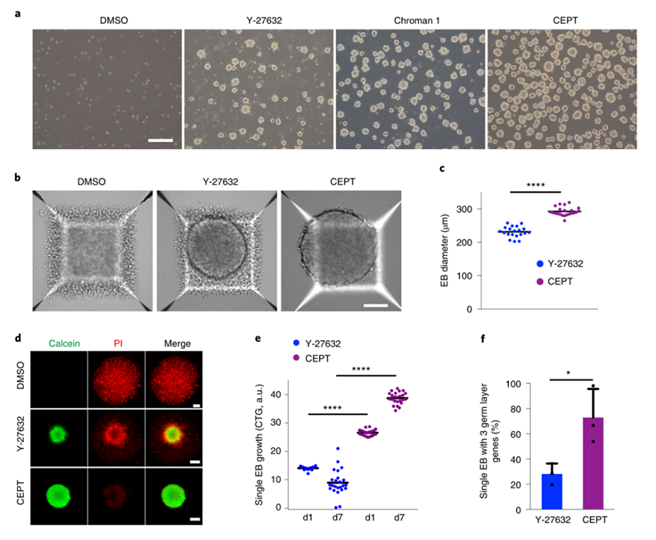
Figure f
On the 30th day, histological analysis of HE staining showed significant differences in neural tissue differentiation (Figure g). The immunohistochemistry of the forebrain labeled FOXG1 confirmed that the organic compounds produced using CEPT produced more neural tissues, showing complex morphology (Figure h). Compared to Y-27632, the improvement in organic neural differentiation produced by CEPT has also been confirmed by unbiased transcriptional analysis using a large amount of available RNA sequencing (RNA seq) data. A comparison of popular categories indicates that organic compounds produced by CEPT have better neural differentiation, while Y-27632 treatment leads to both neural and non-neural categories such as kidneys, blood, and dendritic cells (Figure i). When Y-27632 was replaced by CEPT again, it was observed to improve the formation of kidney like organs.
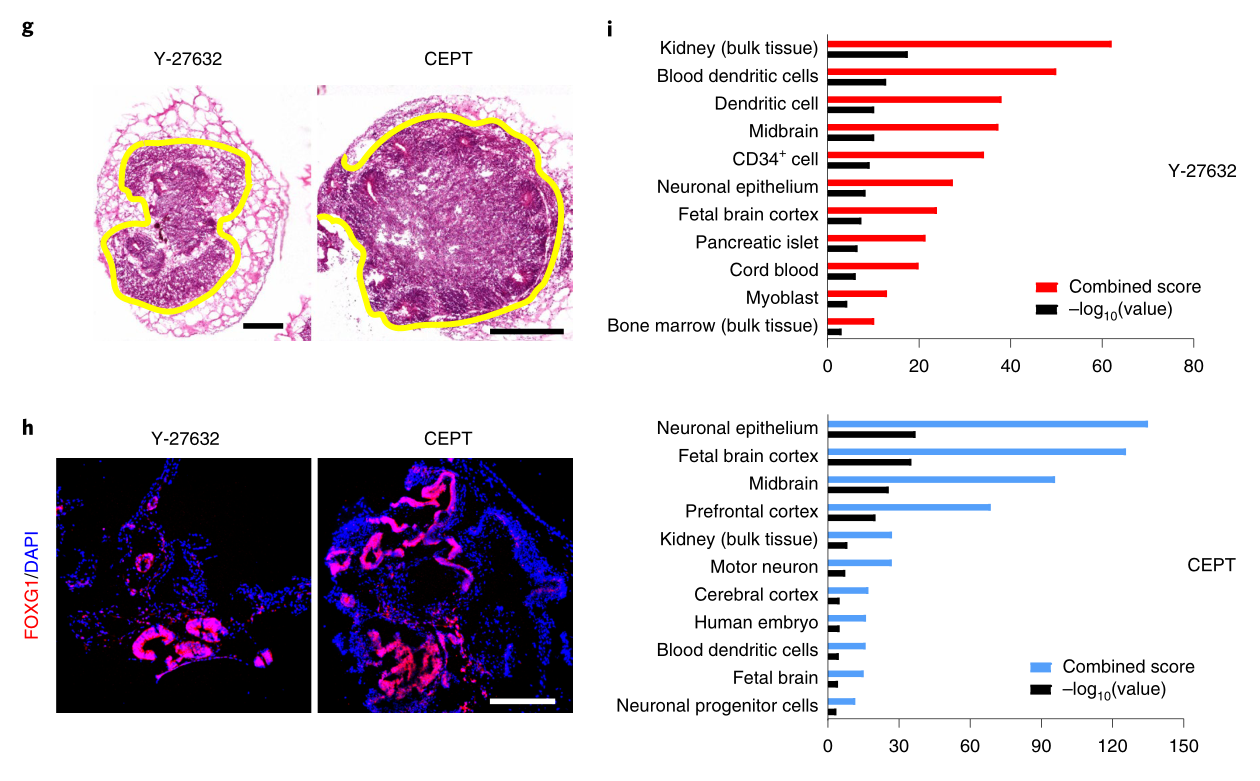
Figure h
Compared with Y-27632 (Figure a-c), the survival rate of hESCs (WA09) cryopreserved after thawing significantly improved (approximately 300%) after 24 hours of CEPT treatment. For a more systematic comparison, different reagent combinations were used for cell cryopreservation and thawing (Figure d-g). Interestingly, the use of three different cryopreservation methods (Y-27632, CEPT, and commercially available mFreSR) had minimal impact and similar results, while the reagents used during thawing showed significant differences (Figure d). Therefore, in the presence of CEPT, Y-27632, Regenerative cells Clone, or SMC4, all five hPSC strains showed higher survival rates than DMSO, Y-27632, Regenerative cells, Clone, or SMC4 in the presence of CEPT (Figure e-g). In addition, because the biological sample bank is crucial to regenerative medicine, it is also confirmed that CEPT treatment provides a higher cell survival rate after long-term storage (cryopreservation with CEPT for 12 months) and thawing of hESCs, IPSCs and astrocyte. Similarly, when long-term frozen cells were stored on dry ice for 72 hours before thawing to simulate the transportation of stem cell products, the use of CEPT once again significantly improved cell survival.
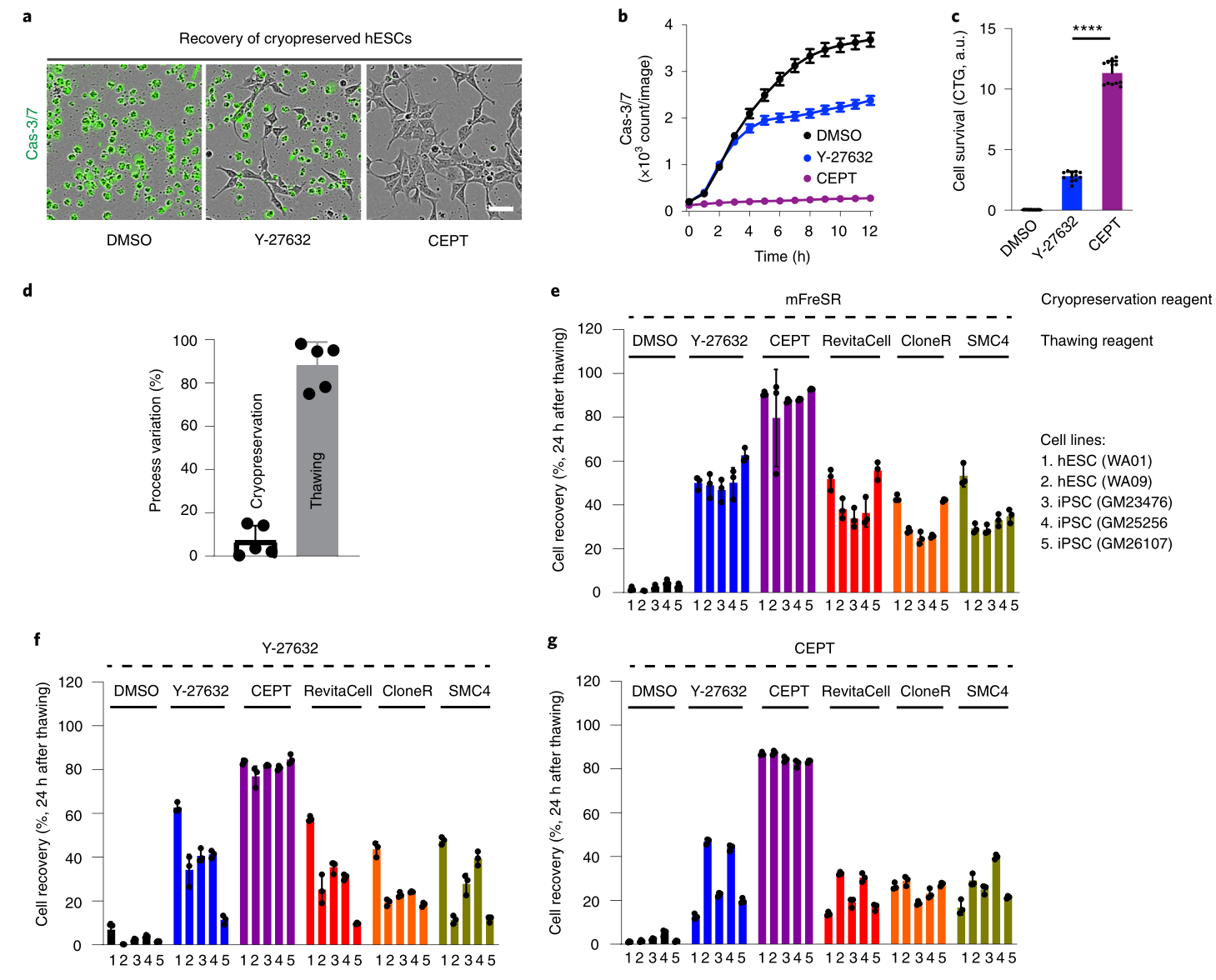
Figure a-c
Next, we investigated whether CEPT can also improve the thawing of cryopreserved differentiated cells. Several cell types from IPSC sources obtained from a commercial supplier (Fujifilm CDI), including myocardial cells, hepatocytes, motor neurons and internally generated astrocyte, significantly improved cell survival after CEPT treatment (Figure h). For example, the results of myocardial cells showed an increase in survival rate of about 36% compared to DMSO, and an improvement in motor neurons of about 63%. The improvement in the survival rate of myocardial cells and motor neurons has a long-term effect, with a 14 day increase in functional activity observed in electroplated multi electrode array measurements (Figure i-k).
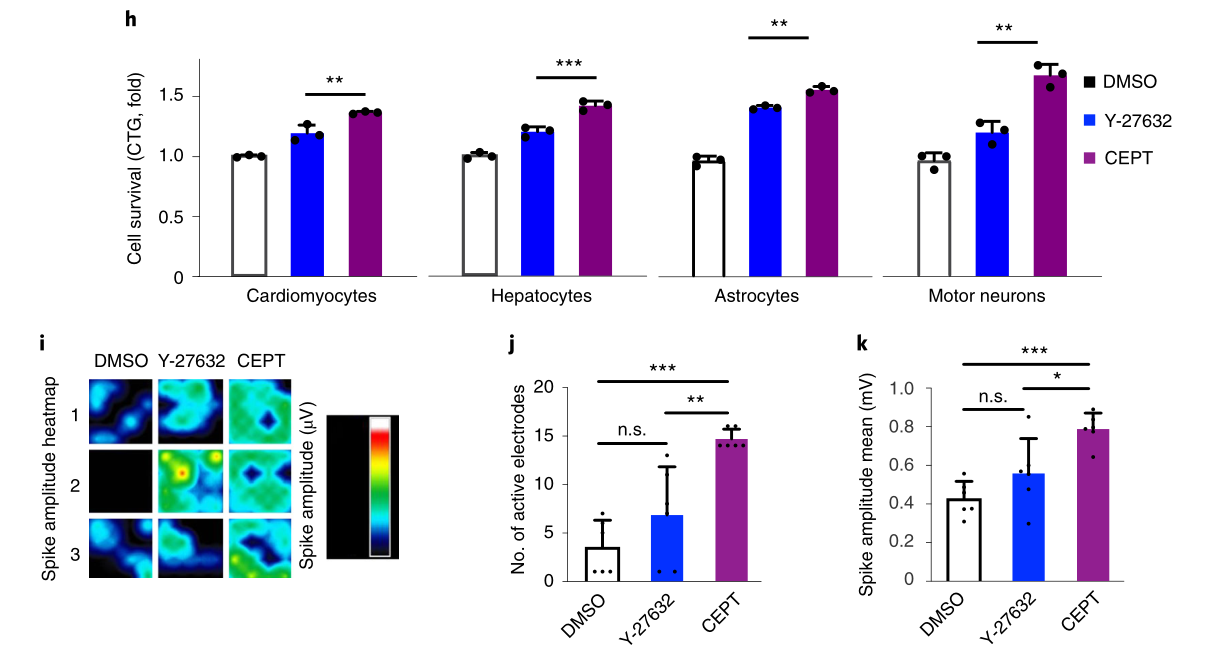
Figure i-k
CEPT can not only reduce the apoptosis of stem cells during the formation of EB, but also promote the growth and differentiation of EB and micro-organs. At the same time, CEPT can also greatly reduce the apoptosis of stem cells and stem cell products during cryopreservation and recovery. Therefore, CEPT has broad application prospects in the basic research and clinical application of human stem cells.





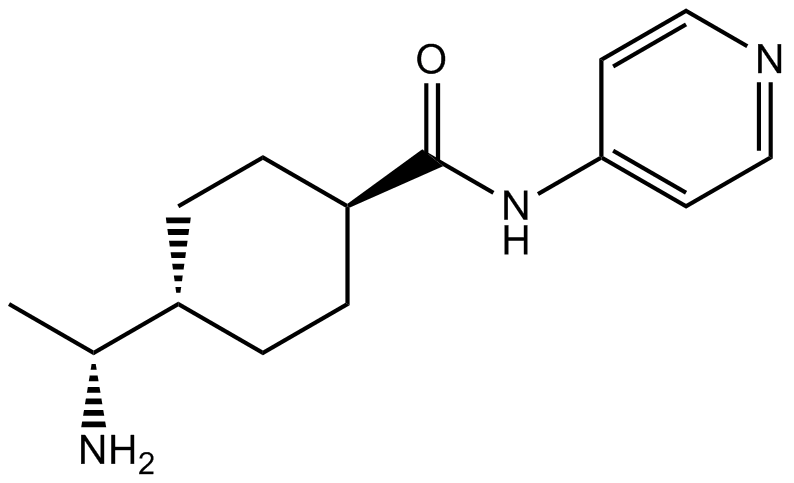

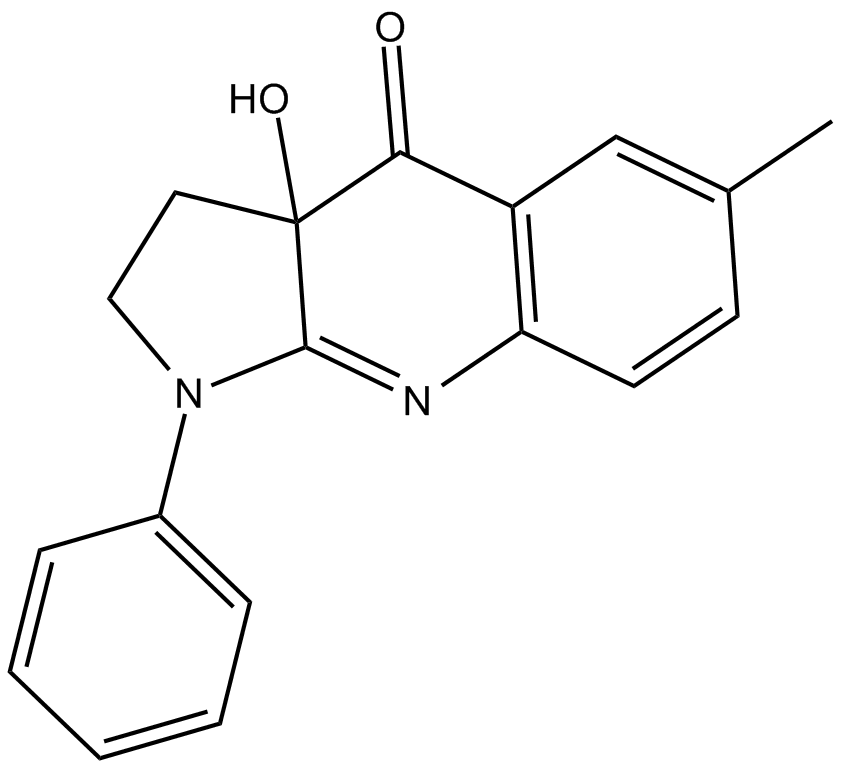
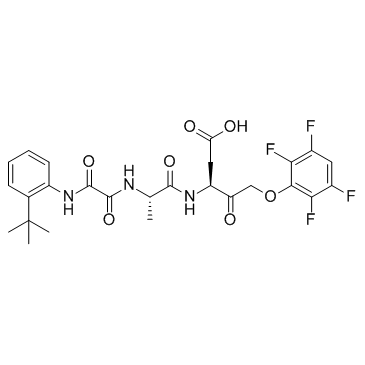
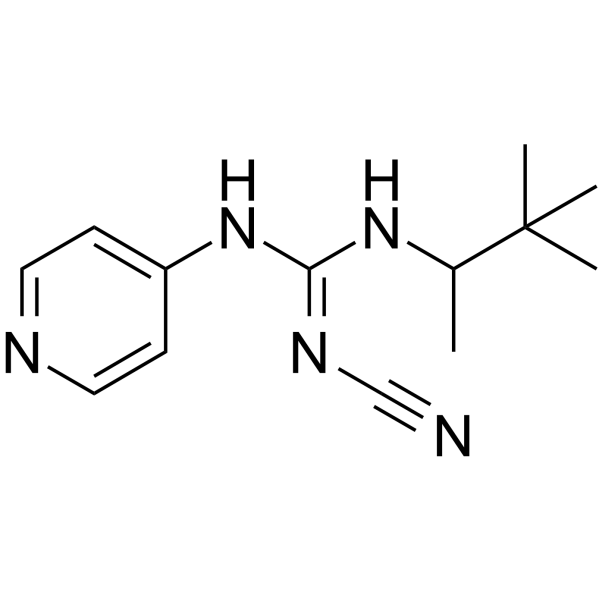









Commentaires